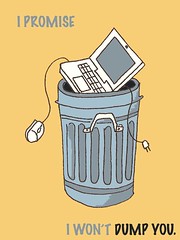You may or may not know the legend of "El Dorado." Remember all those Spanish sailing half way around the world to the new world in search of gold? El Dorado was never found, but gold? Yes, they found a lot of it! Most of the gold objects found were taken back to Spain. Colombia kept some of its precious patrimony where it belonged, and if you ever go to Bogotá, you must visit the Museo del Oro (The Gold Museum). It hosts the largest collection in the world of pre-Hispanic gold-work (34,000 objects.) I wish I had pictures of the museum, but please follow the link if you are curious. Gold objects aside, you can truly find your own dorado in the streets of Bogotá.
I moved to Bogotá in 1984 to study at the Javeriana University, my father's Alma Mater. I can truthfully say that the following 5 years were to shape me for the rest of my life. I love Bogotá, the city and its people. I like the weather, the shy sunshine behind the clouds, the torrential rains in the afternoons, the bright sunsets in the mountains. While in school, I learned a lot about architecture (as it was my major), but I also got involved in the school's drama group and the mountaineering club. I met many of my dearest friends there, we traveled all over Colombia together, discovering the landscape and each other. I met my husband then.
If I am getting sidetracked here is because it is impossible for me to talk about this city without talking about myself. This immense city of seven million residents, with abundant parks, museums and restaurants is like no other place I have been. There are cycle-routes all over the city so that thousands ride their bikes to work (move over Holland!); in addition to the established roads, 75 miles of urban streets are turned to bicyclists and pedestrians alike every Sunday. Restaurants abound from the posh and fancy to the unique and memorable. Culture permeates everything, and you can easily find a museum worth your while, or just meander through the streets of the well preserved colonial downtown. 
While in school, I used to spend a lot of time in little bars, salsa dancing the night away. I remember how cold it was by the time we decided to head back home, I remember the empty streets, the lights of the city all around, my friends singing and laughing. It was the eighties, and we were going through one of the most violent periods in our history: the cartels were fighting extradition, and they were doing everything in their power to make us afraid. They had the money and the power, and they decided to show the later by detonating bombs in our cities, our neighborhoods, our streets. When it all started, we used to stay home, we did not go out, we hid. Then, we went back to the streets, we were no longer afraid, we were living and not hiding. It was somehow empowering to be so careless.
Today Bogotá enjoys a renaissance of sorts. Violence has taken a plunge, and the world is noticing. The New York Times recently placed Bogotá on its list of top places to visit in 2008. Unesco awarded it the City for Peace Prize for 2002-3, given for developing ''a true urban conviviability,'' and named it the World Book Capital in 2007. Bogotá is definitely a treasure, and I miss it dearly.
A New Season Begins – March 2024
1 year ago












Warning: You may need to re-register with JS-kit(Echo) to leave CommentLuv link: uncheck the CommentLuv box, click 'add another site", type your blog url in "my site", re-check CommentLuv box. Also type over the name Guest!